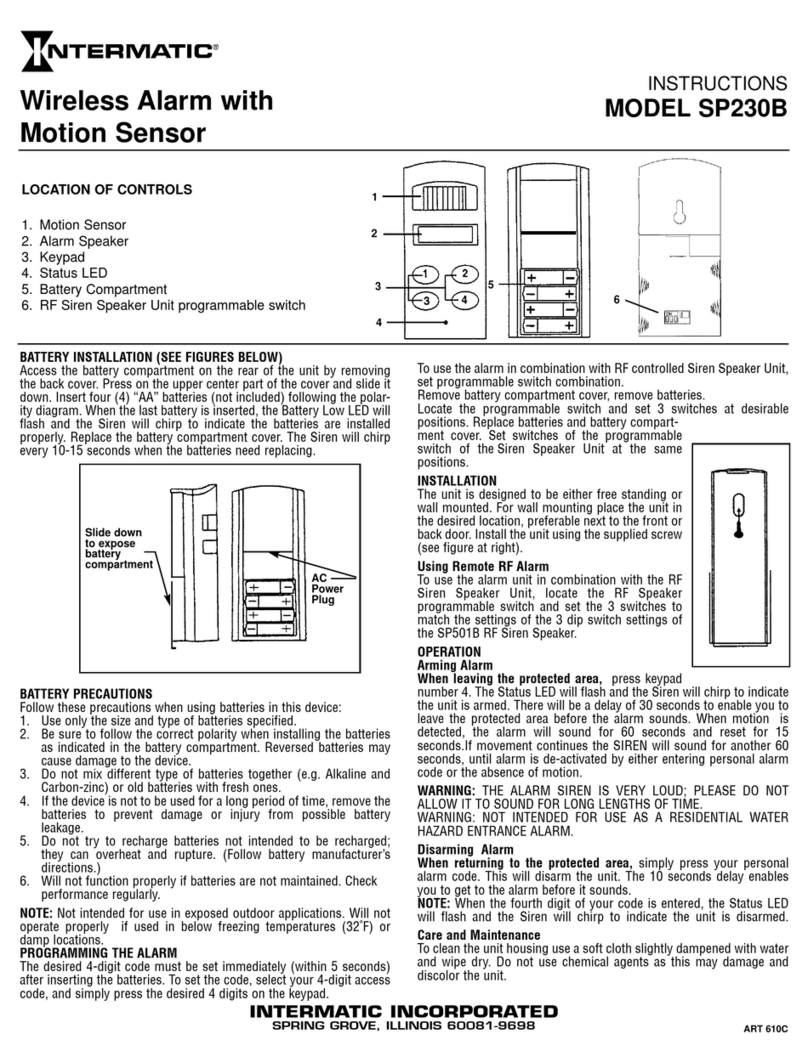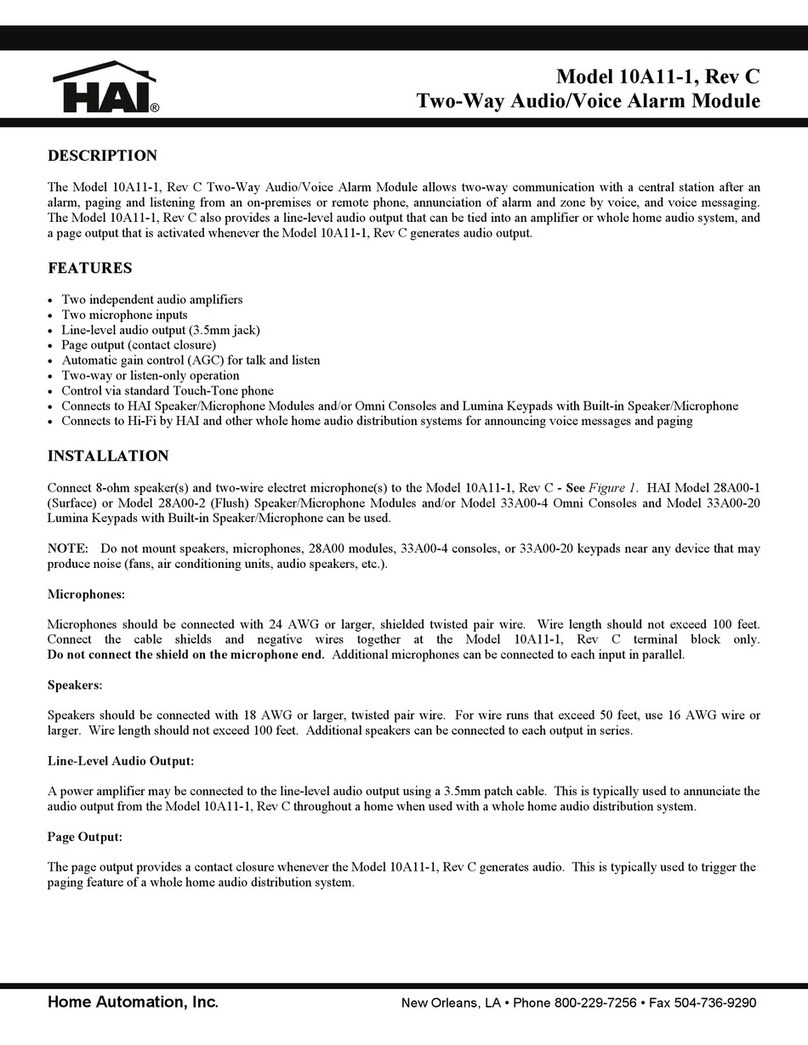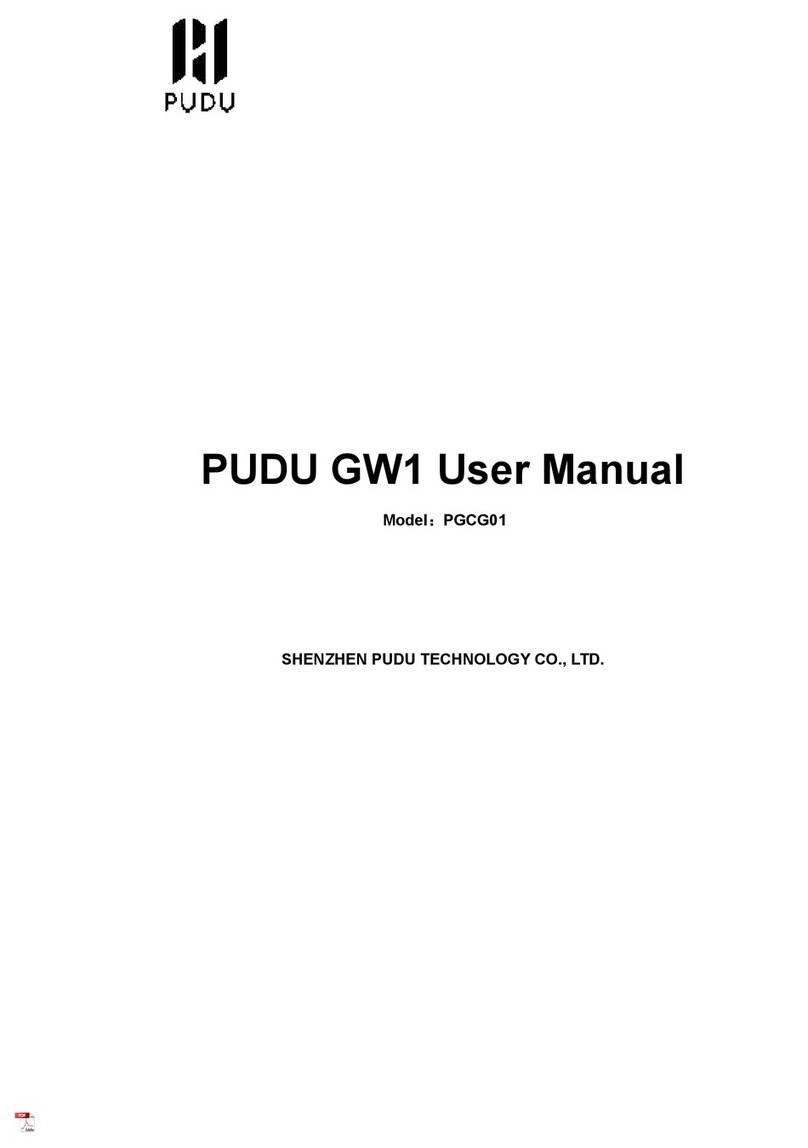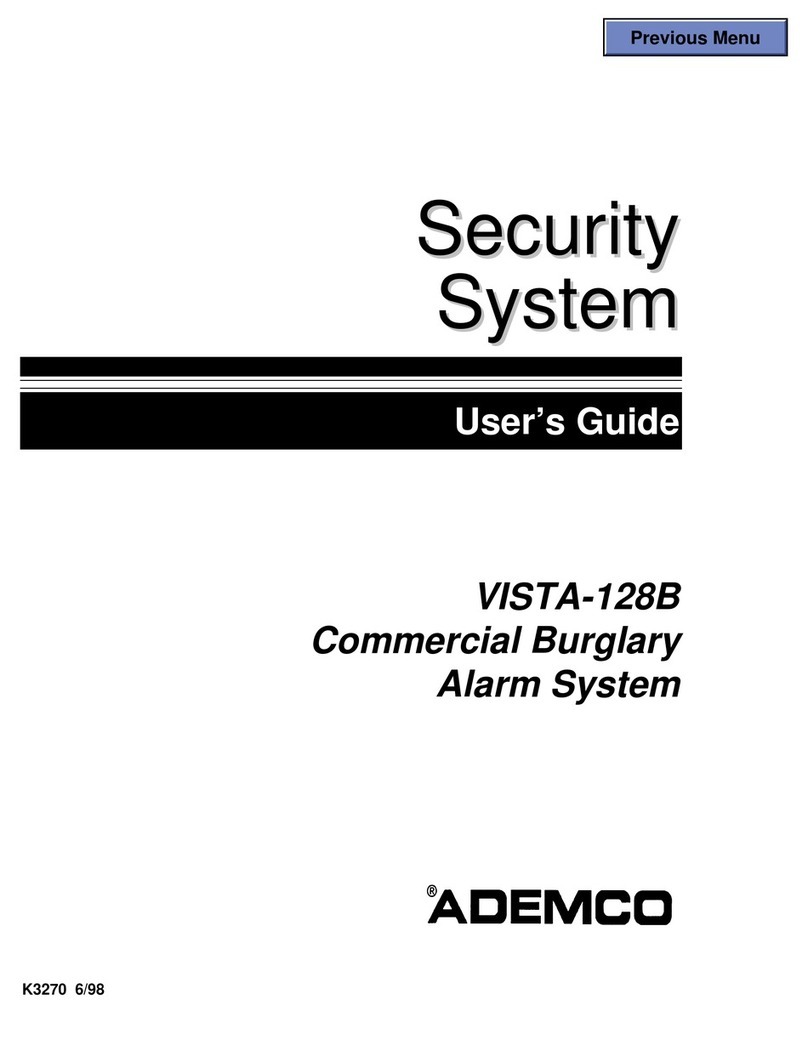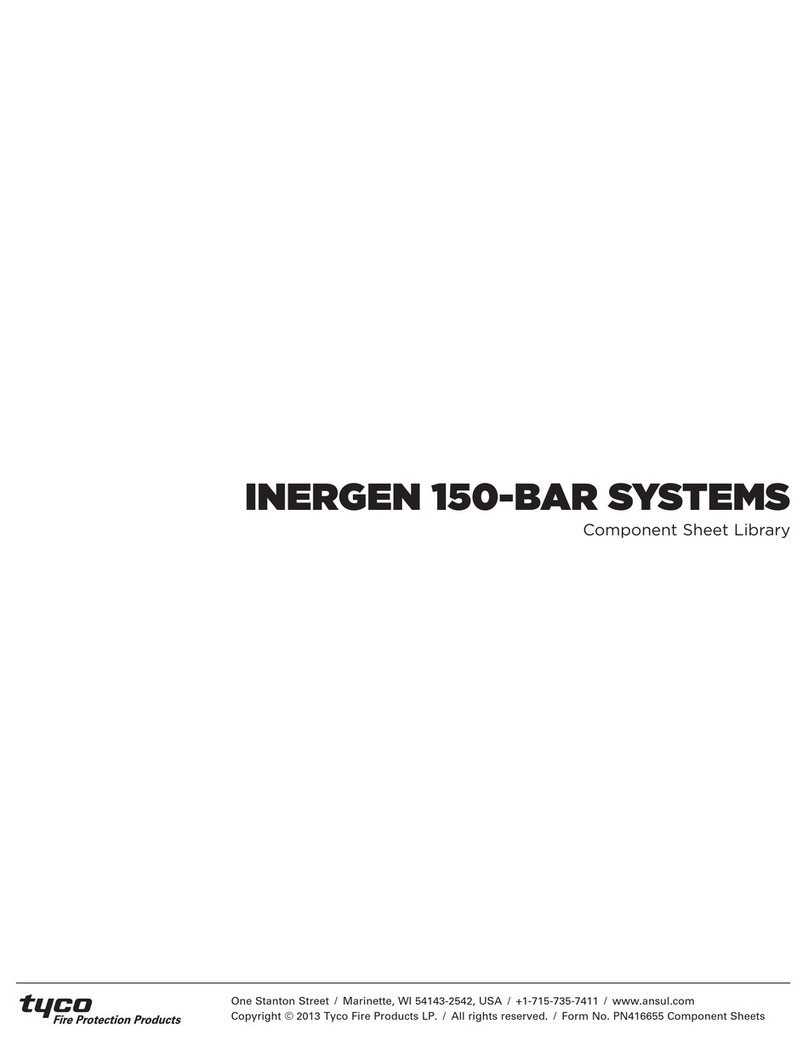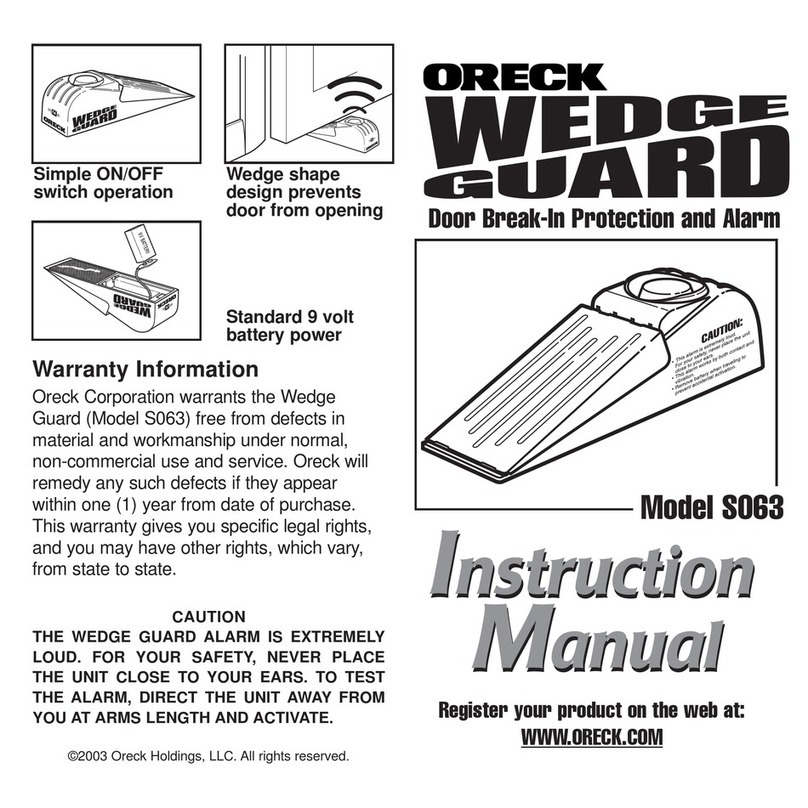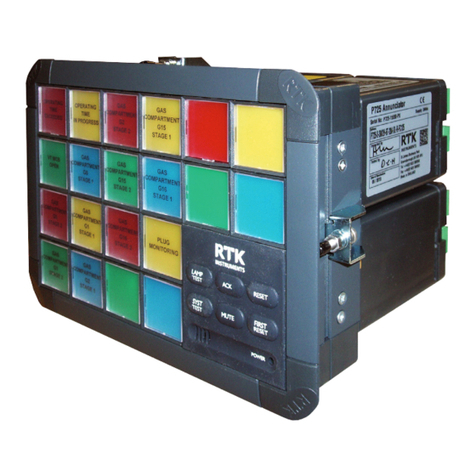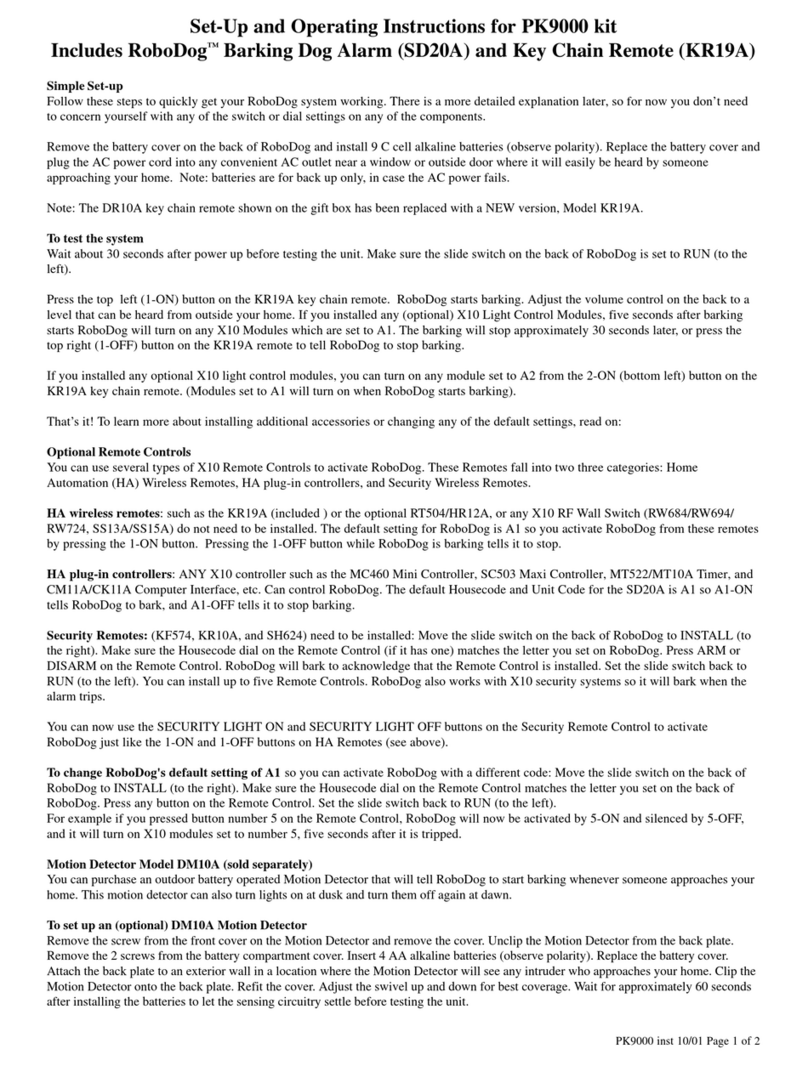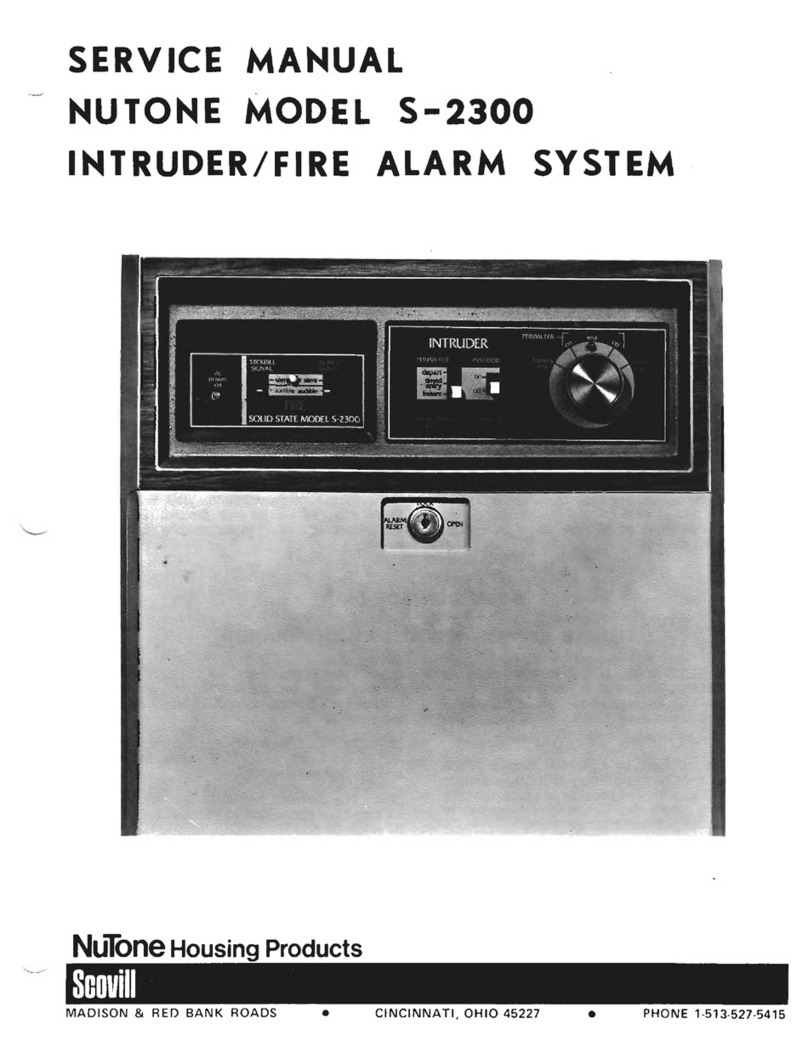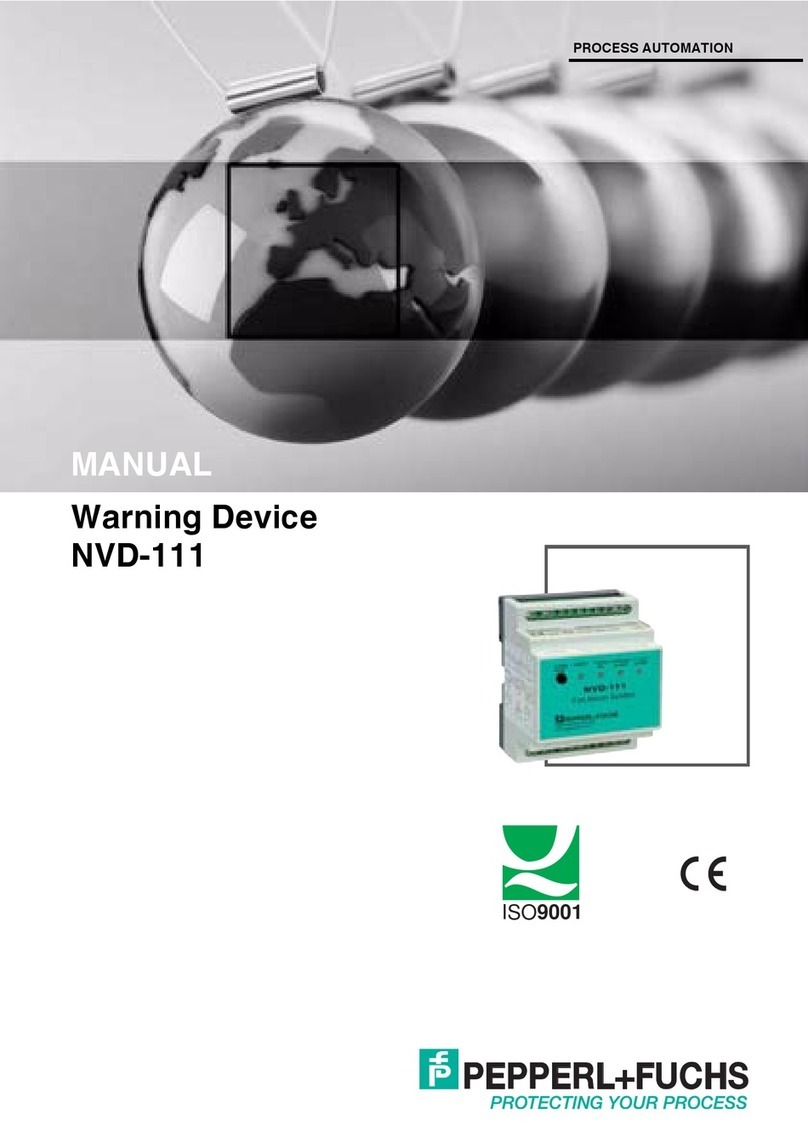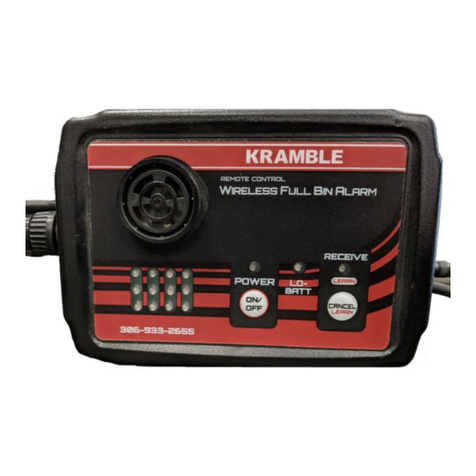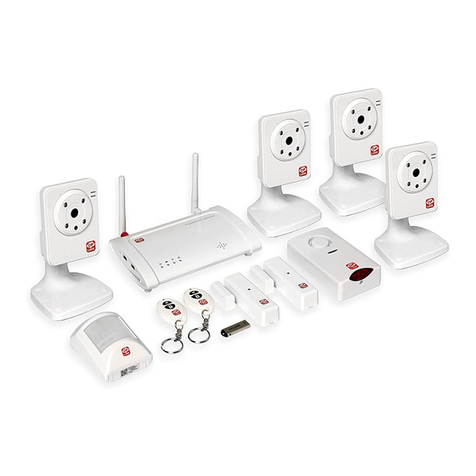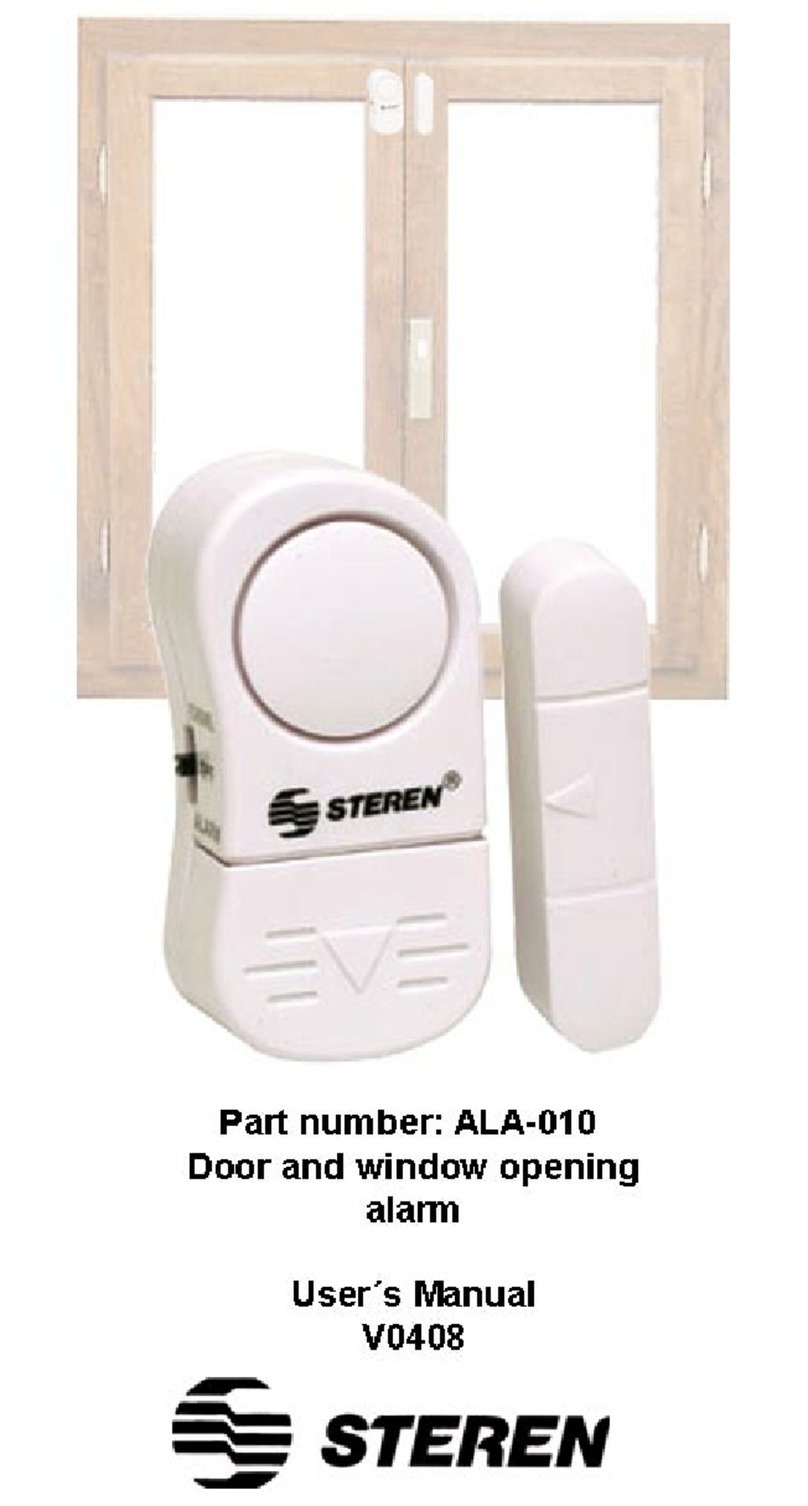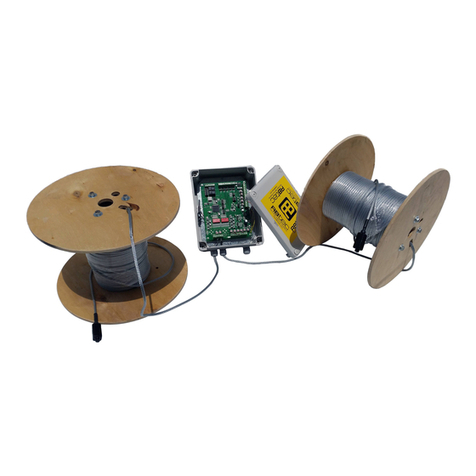Data Aire DAP III User manual

Data Alarm Processor-III
DAP™ III
Operation Manual
Data Aire, Inc.
230 W. BlueRidge Avenue
Orange, CA 92865
www.dataaire.com
Unit Mounted DAP III
Wall Mounted DAP III
U
nit Mounted DAP I
II


3
Table of Contents
Introduction .............................................................................................................................4
Modes of Operation.................................................................................................................5
Hard Off/ON .............................................................................................................................6
DAP III Processor
Standard Features...................................................................................................................8
Optional Features....................................................................................................................8
Diagnostic and Service Features...........................................................................................9
Protective and Safety Features..............................................................................................9
Display Panel.........................................................................................................................10
Condition and data displayed.......................................................................................10
Functions displayed ......................................................................................................10
Warning and alarms displayed .....................................................................................11
Historical data displayed...............................................................................................11
Programmable Selections12
Menu Groups ...........................................................................................................................13
Sub Menus ...........................................................................................................................13
Display Panel Push Button Functions........................................................................................16
Automatic Diagnostic Self-test on Start Up...............................................................................17
Menuing
Group 1 - Status and History................................................................................................18
Group 2 - Setpoints...............................................................................................................20
Group 3 - Operation ..............................................................................................................22
Group 4 - Alarms ...................................................................................................................28
Group 5 - Configuration........................................................................................................38
Group 6 - Network.................................................................................................................40
Group 7 - Calibration.............................................................................................................42
Group 8 - Set-Back................................................................................................................44
Group 9 - Diagnostics...........................................................................................................49
Group 10 - Analog .................................................................................................................53
Control Logic ...........................................................................................................................58
Troubleshooting Guide................................................................................................................70
Manual Override Switches...........................................................................................................77
Analogue Module Micro-switches...............................................................................................78

4
Data Aire
Data Alarm Processor III
(DAP™ III)
Data Aire’s Data Alarm Processor III (DAP III) continues the tradition of advanced electronic devices from
Data Aire for monitor and control of computer room air conditioning units which began in 1977, over thirty years ago.
Each generation of these devices has provided more accurate monitoring information and flexibility in controlling the
unit. The DAP III, microprocessor, based on the popular non-proprietary protocol, Modbus RTU, is equipped with
flash memory and along with the standard USB port permits fast and easy software updates. The modular design
offer installation and upgrades flexibility. Should you need to upgrade your unit simply pop in a new board. As in the
past the DAP III communicates directly with all major building management system (BMS). Just add a communica-
tions card and you are connected. One new exciting feature of the DAP III is a real time clock allowing you to pin-
point problems, precisely knowing what occurred and when. A new hierarchal menu structure permits easy and fast
access making programming simple.
The DAP III is the latest in microprocessor design and will keep your computer room air conditioning unit running ef-
ficiently for a long time.
While the DAP III has two distinct looks they are identical as far as program and function. This Operation Manual cov-
ers both the unit and wall mount.
The unit mounted DAP III panel, shown to the left,
comes standard on all floor mount Data Aire units.
The wall mounted DAP III panel, shown to the right, is
standard on all Mini-Plus, LCS, and Shelf units. It can
also be an option on the Mini and floor mounted units.

5
Modes of Operation - The DAP III has two modes of operation. The Operation mode is the prevelant mode
and occurs when the unit is in normal operation. During this mode the top row of the display shows the current opera-
tion which the unit is in, such as: humidification, dehumidification, reheat stage - either 1,2 or 3 depending on how the
unit is configured; cooling stage - either 1 or 2 again depending on the configuration of the unit; and energy saver. If
none of these condition exist a display of “Data Aire System Ready” will be shown. The lower row will continuously
scrolls through the following displays: date and time set in the DAP III program; unit number and zone number (Pro-
viding the unit is connected to a network. If not connected to a network it will display “N/A.”) as programmed; current
temperature and humidity detected by the return air sensors or if the optional remote sensors are used it will be the
conditions the remote sensors record; then any alarm conditions currently active. (A listing of these alarm conditions
are shown on page 11.) If your unit uses chilled water DAP III will display the percentage of chilled water flow as well.
In the upper right-hand corner of the DAP III display you should find a blinking form in the shape of a heart. The blink-
ing indicates that the processor is functional.
The second mode of the DAP III is the Menu Mode which is described in the balance of this manual. To enter the
Menu Mode depress either of the MENU buttons.
DAP III Buttons - On the front of the DAP III there are seven buttons: an ON/OFF, MENU UP ()and MENU
DOWN () button; SELECT UP () and SELECT DOWN () button; SILENCE /ALARM button and an EXIT button.
The ON/OFF button is a soft power on/power off button. The hard power ON/OFF switch is located on the DAP III
Control Module circuit board and will be explained in the next section of this manual.
SILENCE /ALARM button only function is to mute audio alarms, the button is sparingly used in programming.
EXIT button has no function in the operation mode, however, it is used in the menu mode. Once in the menu mode
when the EXIT button is depressed the values programmed are saved and takes you up one level. For example if
you are in the Menu Groups, as shown on the top of page 13, depressing the EXIT button will take you to the opera-
tion mode. However, if you are in a Sub-Menus, shown on pages 13-15, depressing the EXIT button will take you to
the Menu Group for that sub group. For example if you were in sub-menu group 4-6 Firestat Temperature Alarm Limit,
depressing the EXIT button will take you to Menu Group 4 -Alarms .
MENU / MENU these buttons primarily allow you the scroll up or down in the menu grouping that you are in
currently. If you are in the Group menus depressing the MENU button will take you to the next higher menu, from
Group1 - Status & History to Group 2 - Setpoints. Conversely pressing the MENU button will take you to the next
lower menu in that grouping, from sub group 8-5 Set-Back Reheat depressing the MENU button would take you
to sub group 8-4 Set Up Cool. (All menu grouping continuously scroll, once you reach the last menu option and you
depress the MENU button you will return to the first menu option.) These buttons have other specialized functions
depending on the subgroup menu you are addressing. These functions are described in the body of this manual in
the section where they apply. If the MENU buttons are held down they will advance at a rapid rate. If there is no but-
ton activity for three minutes the DAP III will return to the Operation Mode.
SELECT /SELECT these buttons, as the name implies, allows you to select a menu once you have located it
using the menu buttons. For example if you wanted to select the sub group menus for “Group 3 - Operation,” once
you scrolled to the group using menu buttons - depress the SELECT button will take you to “3-1 - Set Time and
Date,” the SELECT button would take you to sub menu “3-16 - Humidification Desaturation Cycle” the last menu
option in sub-menu group 3 Once in sub group menus the SELECT and SELECT buttons permit you to scroll
through that menu’s options..

6
Hard Power ON/OFF Switch - After supplying power to the unit, if the DAP III does not come on when you
press the soft ON/OFF button on the cover of the DAP III it will be necessary for you to open the cover of the DAP III
The DAP III can be shipped in three different configuration of circuit boards; the basic DAP III board; the DAP III with
the relay board; and DAP III with the relay and analog boards. Each of these configurations are shown below and on
the following page. The configuration in your unit is dependent on the type of cooling and options that was selected.
One of these photos will match the circuit board that is in your unit. However the hard ON/OFF switch is in the same
position on all boards
DAP III Circuit Board
Control Module
The use of the additional switches on the circuit boards will be discussed on page
78
78 of this manual.
Hard power ON/OFF Switch
Shown in the ON position
on the upper panel and OFF
position in the lower panel.
DAP III Control Module
Control Expansion Module

7
DAP III Circuit Board with Relay Module installed
Hard power ON/OFF Switch
shown here in the OFF
position
Relay Module
DAPIII CIrcuit Board with Relay and Analog Modules installed
Hard Power ON/OFF Switch
shown here in the OFF
position
Analog Module

8
DATA ALARM PROCESSOR – III
The Data Alarm Processor-III (DAP-III) offers the definite answer for precision environmental control. The DAP-III
control system not only controls and monitors temperature, humidity, airflow and cleanliness, it provides component run
times, alarm history and an automatic self-test of the microprocessor. All messages are presented in a clear simple
English and sequentially displayed on a backlit, liquid crystal display (LCD). The DAP-III can interface with a variety of
building management systems (BMS).
STANDARD FEATURES
StandAlone Panel – Service terminals or additional devices are not required for programming or monitoring functions.
Microprocessor Based – State-of-the-art technology and reliability in a programmable solid-state control panel.
Smooth Keyboard Type Switches – High reliability, flat, sealed switches with tactile feedback.
Two Row, 80 Character, Backlit Supertwist Liquid Crystal Display (LCD) – information is displayed and presented
in a format that is easily viewed and understood.
All Settings are Programmable from the face of the Panel – Expedient and user-friendly.
Layered Forward and Backward Menu Access – Facilitates programming with flexible operation.
Multi-level Password Access– Controls any unauthorized changes to settings and system functions.
Database of Unit and Room Conditions – Historical data that facilitates service, apparatus setup and fine tuning of
setpoints.
Battery Backup for Historical Data – Extensive historical data is preserved by integral battery backup in case of power
failure.
Menus Factory Programmed – Menus that pertain to the type and method of cooling, reheat and humidification based
on the unit’s components and options.
Programmed Settings Saved in Flash Memmory – Non-volatile memory stored so all control settings and operational
parameters are secured indefinitely even during power outage.
Factory Calibrated Temperature and Humidity Sensors – Accurate and consistent regulation especially in multiple
unit applications.
Automatic Self-Test Diagnostics – Verifies the processor and selected components are functioning properly at power
on and continuously during operation.
OPERATIONAL FEATURES
(Optional feature may require additional components and/or sensors.)
Sequential Load Activation – Time and temperature based logic that sequentially starts and stops stages of cooling
and reheat.
Compressor Short Cycle Control – Prevents excessive compressor wear by using restart and anti-cycle limits.
Automatic or Manual Restart – Restart methods are programmable in the event of a power failure.

9
Supplemental Compressor Operation during Energy Save Mode – Extends the savings from Energy Saver by
allowing one or two compressors to supplement cooling as needed when Energy Saver cooling is not sufficient.
Temperature Anticipation – Responds to varying rates of temperature change.
Humidity Anticipation – Modifies the humidity setpoint to diminish excess humidification and dehumidification.
Dehumidification Mode Lockout – Inhibits dehumidification if not required for system performance.
Start Time Delay – Programmable time delay staggers the start-up of multiple units to prevent high power demand
peaks.
Chilled Water, Energy Saver and Hot Water Coil Flush Cycle – Periodically circulates fluid in the coil to reduce
deposit buildup in system.
Automatic Compressor Rotation – Periodically rotates the lead/lag sequence to balance compressor run times.
Automatic Reheat Element Rotation – Rotates the staging sequence to balance the run times of the heating elements.
Energy Saver (Glycol) or Auxiliary Chilled Water Operation – Two types of Energy Saver Systems are available.
Programmable Water Under Floor Alarm - Can shut down unit or just compressors.
DIAGNOSTIC AND SERVICE FEATURES
Alarms Displayed in Order of Occurence – Sequence with time of occurrence assist in diagnosing the cause of
alarms.
Programmable Delays for Optional Alarms – Reduces nuisance and false alarms caused by temporary or transient
conditions.
Manual Diagnostic Program – Provides accessible procedures to test the processor and major system components.
Manual Override for Blower, Cool 1 and 2, Heat 1, Humidification and Water Valve – The control circuit is operable
even if the processor is not functioning properly.
Adjustable Alarm Limits – Threshold levels for temperature and humidity alarms are programmable.
Four Programmable Optional Alarms – In addition to the standard alarms, four additional alarms are programmable.
Select Alarms Optionally Disabled – Nonessential alarms can be turned off.
Audio Alarm Tone – Four programmable alarm tones.
PROTECTIVE AND SAFETY FEATURES
Metal Shell Enclosure with Sealed Front Control Panel – Provides electromagnetic interference (EMI) protection and
general protection against environmental contamination and handling damage.
Watch Dog Timer – Automatically resets the circuit board, clears any corrupted memory and restarts the system with
minimal interruption in case of an unfiltered transient signal.
Opto-Signal Inputs – Isolates the circuit board from electrical noise or static from contactors, compressors and motors
that can contaminate the power at the circuit board.

10
Protected 24 VAC Power Input – Fused metal oxide varistor (MOV) and transient voltage suppressor react to interrupt
the power from the circuit board if excessive amperage or over voltage condition is detected.
Isolation Transformer – Protection against ground loops, ground shorts, wiring errors and conducted electrical
interference.
Heavy Ground Planes and Power Foils – Large ground plane areas and wide power runs minimize disturbances
caused by EMI and other types of electrical interference.
Switching Power Supply –Allows for wideAC input voltage fluctuation to reduce the effects of a power blackout while
still maintaining circuit board operation.
Fused RS-485 Network Lines on Network Communication Card – Disconnects the circuit board from the source of
current to protect the circuit board components.
Modulating Humidifier Control – Proportional control of steam generator humidifier provides additional refinements in
performance. (Optional Relay Module required.)
Humidifier Autoflush Cycle – An adjustable flush cycle for infrared humidifiers to reduce deposit build-up. (Optional
Relay Module required.)
Three Additional Remote Alarms – Group or specific alarm selection for remote alarm contact. (Optional Relay
Module required.)
Analog Inputs – Output values of four external analog sensors can be read on the processor display. (OptionalAnalog
board required.)
Underfloor Water Detection Cable – Provides continuous water detection cable to encircle the entire unit.
Display Panel
CONDITIONS and DATA DISPLAYED
TEMPERATURE SETPOINT – ºF or ºC CURRENT TEMPERATURE – ºF or ºC
HUMIDITY SETPOINT – Percent of relative humidity CURRENT HUMIDITY – Percent of relative humidity
CURRENT DISCHARGEAIR or CHILLED WATER TEMPERATURE* - ºF or ºC
FUNCTIONS DISPLAYED
COOLING – 1st stage, 2nd stage, 3rd stage*, 4th stage* REHEAT – 1st stage, 2nd stage, 3rd stage, hot water*
CHILLED WATER FLOW – 10 to 100% (based on VDC output) ENERGY SAVER* - hours of operation
DEHUMIDIFICATION - hours of operation HUMIDIFICATION - hours of operation
* This optional feature or data display may require additional components and/or sensors.

11
WARNING AND ALARMS DISPLAYED
HIGH TEMPERATURE WARNING – (Current temperature)º F/C HIGH HUMIDITY WARNING – (Current RH)%
LOW TEMPERATURE WARNING – (Current temperature)º F/C LOW HUMIDITY WARNING – (Current RH)%
LOW PRESSURE COMPRESSOR: 1 – (Automatic reset) NO AIRFLOW – CHECK BELT AND MOTOR
UNDER FLOOR WATER DETECTION – CHECK PROBE DIRTY FILTER – CHECK FILTERS
LOW PRESSURE COMPRESSOR: 2 – (Automatic reset) POWER FAILURE RESTART
MANUAL OVERRIDE – CHECK BYPASS SWITCHES FIRESTAT TRIPPED – Unit shutdown
HUMIDIFIER PROBLEM – CHECK WATER PRESSURE LOW VOLTAGE WARNING – CHECK VOLTAGE
TEMPERATURE SENSOR ERROR – SENSOR PROBLEM COMPRESSOR SHORT CYCLE – WARNING
MAINTENANCE REQUIRED LOCALALARM – SEE TAG INSIDE
HUMIDITY SENSOR FAILURE – SENSOR PROBLEM NO WATER FLOW* - CHECK WATER PUMP
CUSTOM MESSAGE – (Factory programmed custom message) SMOKE DETECTOR* - Unit shutdown
DISCHARGE AIR SENSOR ERROR* HIGH CONDENSATE WATER LEVEL*
FAN MOTOR OVERLOAD* – CHECK MOTOR AMPERAGE
STANDBY PUMP ON* - CHECK PRIMARY WATER PUMP
PERSON TO CONTACT ONALARM* - (Programmable message)
HIGH PRESSURE/INTERNAL OVERLOAD COMPRESSOR: 1 - Manual reset required
HIGH PRESSURE/INTERNAL OVERLOAD COMPRESSOR: 2 - Manual reset required
HISTORICAL DATA DISPLAYED
EQUIPMENT RUNTIMES – Blower, compressor 1 and 2, reheat strip 1, 2, and 3, dehumidification, Energy Saver*,
humidifier, condenser and chilled water
ALARM HISTORY – Last 10 alarms with time and date of occurrence
LAST 24 HOURS – High and low temperature, high and low humidity
AVERAGE PERCENT OF CAPACITY LAST HOUR – Compressor(s), humidifier, reheat strips and water valve
* This optional feature or data display may require additional components and/or sensors.

12
PROGRAMMABLE SELECTIONS
Temperature setpoint Temperature deadband
High temperature alarm limit Low temperature alarm limit
Humidity setpoint Humidity deadband
High humidity alarm limit Low humidity alarm limit
Mode and stage response time Compressor lead/lag sequence
Reset equipment runtimes Audio alarm mode
Automatic self-test acknowledgement Manual diagnosis
Humidity anticipation Compressor short cycle alarm
Dehumidification mode Low discharge temperature alarm limit*
Power problem or restart mode System start delay
Message for optional alarm 1, 2, 3, and 4* Delay for optional alarm 1, 2, 3, and 4
Compressor supplements to energy saver* Remote alarm 1, 2, 3 and 4 selection*
Person to contact on alarm Define password
Humidifier autoflush timer* Firestat temperature alarm limit
Scheduled normal maintenance Temperature scale
Calibrate temperature sensor Calibrate humidity sensor
Compressor(s) Reheat states
Humidifier Water valve mode
Water valve voltage range Reverse acting water valve
Network protocol* Analog module sensor setups*
Fan speed control module*
Calibrate discharge air sensor or chilled water temperature sensor*
* - May require optional modules

13
MENU GROUPS
Group 1 – Status and History Group 6 – Network
Group 2 – Setpoints Group 7 – Calibration
Group 3 – Operation Group 8 – Set-back**
Group 4 – Alarms Group 9 – Diagnostics
Group 5 – Configuration Group 10 – Analog*
Gruop 11 – Zone Conrol
SUB-MENUS
Group 1 – Status and History
1-1 Temperature and humidity setpoints
1-2 Last 24 hours temperature and humidity
1-3 Percent capacity and average last hour
1-4 Equipment runtimes
1-5 Alarm history-clear alarm history
MENU GROUPS 2 THROUGH 11 REQUIRE A PASSWORD ENTRY
Group 2 – Setpoints
2-1 Change temperature setpoints
2-2 Change temperature deadband
2-3 Change humidity setpoint
2-4 Change humidity deadband
2-5 Change cooling stage-to-stage DB (deadband)
2-6 Change E-Saver CW (chilled water) temperature SP (setpoint)
2-7 Change E-Saver CW temperature DB
Group 3 – Operation
3-1 Set time and date
3-2 Mode and stage response time
3-3 Compressor lead/lag sequence
3-4 System start delay
3-5 Reset equipment run time
3-6 Automatic self-test acknowledge
3-7 Compressor supplements to E-Saver
3-8 Energy Saver lock-out time
3-9 Dehumidification mode
3-10 Power problem or restart mode
3-11 Scheduled normal maintenance
3-12 Temperature scale
3-13 Fan mode*
3-14 Override request
3-15 Humidity anticipation
3-16 Humidification desaturation cycle
3-17 Energy Saver to DX change over deadband
3-18 Constant fan speed for DX cooling
3-19 Constant fan speed for CW cooling
3-20 Fan speed control for DX cooling
3-21 Fan speed control for CW cooling
3-22 Maximum fan speed
3-23 Minimum fan speed
3-24 Differential pressure setpoint
3-25 Differential pressure deadband
3-26 Fan speed response rate
* Only displays when analog module is connected.
** Only displays when DAP III is in RFM (reduced function mode) ceiling systems.

14
SUB-MENUS- continued
Group 4 – Alarms
4-1 Audio alarm mode
4-2 Change high temperature alarm limit
4-3 Change low temperature alarm limit
4-4 Change hi humidity alarm limit
4-5 Change lo humidity alarm limit
4-6 Firestat temperature alarm limit
4-7 Low discharge temp alarm limit
4-8 Compressor short-cycle alarm
4-9 Water under floor alarm action
4-10 No water flow alarm action
4-11 Person to contact on alarm
4-12 Message for optional alarm input 1
4-13 Delay for opt. alarm input 1
4-14 Message for opt. alarm input 2
4-15 Delay for opt. alarm input 2
4-16 Message for opt. alarm input 3
4-17 Delay for opt. alarm input 3
4-18 Message for opt. alarm input 4
4-19 Delay for opt. alarm input 4
4-20 Remote alarm number 1 selection
4-21 Remote alarm number 2 selection
4-22 Remote alarm number 3 selection
4-23 Remote alarm number 4 selection
4-24 No airflow alarm time delay
4-25 No water flow alarm time delay (locked)
MENU GROUP 5 IS LOCKED – NO CHANGES CAN BE MADE UNTIL
MENU IS UNLOCKED
Group 5 – Configuration
5-1 Sensor location
5-2 Define password
5-3 Reduced Function Mode (RFM) active
5-4 Compressor(s)
5-5 Reheat stage
5-6 Humidifier
5-7 Water valve mode
5-8 Water valve voltage control range
5-9 Reverse acting water valve
5-10 Humidifier autoflush timer Only displays when infared humidifier installed
Group 6 – Network
6-1 Unit and network ID
6-2 Network protocol
6-3 IP address
6-4 Netmask address
6-5 Router address
6-6 UDP port
6-7 Ethernet TCP port
6-8 Baudrate (Only appear when ModBusRTU, ModbusASCII, BACnet MS/TP and
Johnson Control N2 protocol is selected. Requires RS-485 communications card.)
6-9 Network ID
6-10 Device ID (this menu only shows when BACnet MS/TP or BACnet Master is selected)
6-11 Max Master (This menu only shows when BACnet MS/TP is selected.)
Menus 6-12 through 6-15 only appear when SNMPv1/v2 is selected.
Shaded menus only displayed when
Ethernet card is installed and configured
for Bacnet IP, MODBUS TCP or SNMP

15
6-12 SNMPv2 Manager 1 Address
6-13 SNMPv2 Manager 1 Notifications
6-14 SNMPv2 Manager 2 Address
6-15 SNMPv2 2 Notifications
Group 7 – Calibration
7-1 Calibrate temperature sensor
7-2 Calibrate humidity sensor
7-3 Calibrate discharge air temperature sensor
7-4 Calibrate CW temperature sensor
Group 8 – Setback (Only displayed when RFM mode is active.)
8-1 Day schedule
8-2 Override enable
8-3 Override time
8-4 Setup cool
8-5 Setback reheat
8-6 Setup dehumidification
8-7 Setback humidification
8-8 Monday schedule
8-9 Tuesday schedule
8-10 Wednesday schedule
8-11 Thursday schedule
8-12 Friday schedule
8-13 Saturday schedule
8-14 Sunday schedule
Group 9 – Diagnostic
9-1 Test buttons
9-2 Check power supply
9-3 Test relays
9-4 Test analog outputs
9-5 Test digital inputs
9-6 Test environmental sensors
9-7 View anticipation humidity setpoint
9-8 Test audio alarm
9-9 Test RS-485 network card
9-10 Test watchdog reset circuit
Group 10 – Analog Group 10 - (Only appears when an Analog Module is connected.)
10-1 Select sensor 1 name
10-2 Specify sensor 1 units of measure
10-3 Specify sensor 1 signal range
10-4 Specify sensor 1 minimum value
10-5 Specify sensor 1 maximum value
10-6 Set Sensor 1 calibration
10-7 Select sensor 2 name
10-8 Specify sensor 2 units of measure
10-9 Specify sensor 2 signal range
10-10 Specify sensor 2 minimum value
10-11 Specify sensor 2 maximum value
10-12 Set sensor 2 calibration
10-13 Select sensor 3 name
10-14 Specify sensor 3 units of measure
10-15 Specify sensor 3 signal range
10-16 Specify sensor 3 minimum value

16
10-17 Specify sensor 3 maximum value
10-18 Set sensor 3 calibrations
10-19 Select sensor 4 name
10-20 Specify sensor 4 units of measure
10-21 Specify sensor 4 signal range
10-22 Specify sensor 4 minimum value
10-23 Specify sensor 4 maximum value
10-24 Set sensor 4 calibration
10-25 Select output 1 configuration
10-26 Select output 2 configuration
Group 11 - Zone Control
11-1 Zone mast enable
11-2 Zone ID
11-3 Unit IDs in this zone
11-4 Primary unit status
11-5 Secondary unit status
11-6 Zone override request
11-7 Unit rotation day
11-8 Unit rotation time
11-9 Standby alarms
11-10 Off alarm
11-11 Temperature standby
11-12 Zone inhibits
11-13 Secondary schedule
11-14 Secondary schedule start day
11-15 Secondary schedule start time
11-16 Secondary schedule stop day
11-17 Secondary schedule stop time

17
PUSH BUTTON FUNCTIONS
The Data Alarm Processor-III panel has seven pressure sensitive feedback-type buttons on the face of the panel. All
programming functions and/or settings are done from the face of the panel. Their functions are as follows:
IMPORTANT NOTE:
The RAM SIGNATURE test often displays “FAIL” on initial start-up because the RAM does not have any stored data.
Simply press “SELECT” to bypass the “FAIL” message. Once the processor is on-line and operating, the RAM will
collect data and the test should pass on future restarts. On start-up, remember to remove the protective paper on the
battery before turning the unit on. Otherwise, the RAM SIGNATURE will fail on future restarts.
Each time a MENU or SELECT button is pressed, it will advance to the next menu, sub-menu, or selection. If the button
is held down, the menus or selections will advance at a rapid rate. If there is no button activity for three (3) minutes the
panel will return to its normal operating mode.
When a menu first appears, it will have a menu number and title. The first time a SELECT button is pressed, the current
value or option in memory is displayed. Additional pressing of a SELECT button will cause alternate values, options
or selections to be displayed. The SELECT button should be pressed until the desired value, option or selection is
displayed. After the desired value, option or selection has been chosen, the MENU button is pressed to save the last
displayed entry into memory and to advance to the next menu display. The EXIT button can be pressed at any time
to return the panel to its normal operating mode. In this mode, the panel will scroll and display the current system
functions, temperature, humidity and ID number. If an alarm is present it will also be displayed.
ON/OFF - Soft switch that
turns the power on
or off to the micro-
processor
Menu - Advances the menus
in ascending order
from 1 to 10
Menu - Advances the menus
in descending order
from 10 to 1.
Select - Selects an option or value in
ascending order.
Select - Selects an option or value
in descending order
ALARM SILENCE
Silences the audio alarm
EXIT - Saves the new settings,
exits the menu function
and returns the panel
to its normal operating
mode

18
AUTOMATIC DIAGNOSTIC SELF-TEST - ON START UP
Press the power ON button to energize the panel. The following messages will be displayed as the panel proceeds through the
Automatic Diagnostic Self-Test. TheAutomatic Diagnostic Self-Test takes approximately 30 seconds.
Display Message 1
DATAALARM PROCESSOR III
MODEL xxx-xxx-xxx BOOTLOADER REV x.xx
Display Message 2
DATAALARM PROCESSOR III
MODEL nnn-nnn-nnn SOFTWARE REV; n.nn
Display Message 3*
DATAALARM PROCESSOR III
MODEL nnn-nnn-nnn CONTROL MODULE
Display Message 4*
DATAALARM PROCESSOR III
MODEL nnn-nnn-nnn EXPANSION MODULE
Display Message 5*
DATAALARM PROCESSOR III
MODEL nnn-nnn-nnn RELAY MODULE
Display Message 6*
DATAALARM PROCESSOR III
MODEL nnn-nnn-nnn ANALOG MODULE
Display Message 7*
DATAALARM PROCESSOR III
MODEL nnn-nnn-nnn (Comm Card) MODULE
Display Message 8
DATAALARM PROCESSOR III SELF-TEST
FLASH: PASS
Display Message 9
DATAALARM PROCESSOR III SELF-TEST
STATIC RAM: PASS
Display Message 10
DATAALARM PROCESSOR III SELF-TEST
PARAMETERS: PASS
Display Message 11
DATAALARM PROCESSOR III SELF TEST
RAM SIGNATURE: PASS
Display Message 12
DATAALARM PROCESSOR III SELF-TEST
ANALOG: PASS
Display Message 13
DATAALARM PROCESSOR III SELF-TEST
12 VDC REGULATED: nn.n PASS
Display Message 14
DATAALARM PROCESSOR III SELF-TEST
5VDC REGULATED: nn.n PASS
Display Message 15
DATAALARM PROCESSOR III SELF-TEST
BATTERY VOLTAGE: n.n PASS
Display Message 16
DATAALARM PROCESSOR III SELF-TEST
RETURN TEMP SENSOR: PASS
Display Message 17
DATAALARM PROCESSOR III SELF-TEST
DISCHARGE TEMP SENSOR: PASS
Display Message 18
DATAALARM PROCESSOR III SELF-TEST
HUMIDITY SENSOR: PASS
Display Message 19
DATAALARM PROCESSOR III SELF-TEST
BUTTONS: PASS
* Only displays when these modules or
communication cards are connected.
If there is a failure during the
Automatic Self-Test, the display will
stop scrolling and only the message
with the failure will be displayed.
To allow the processor to continue
the self-test after a failure has been
displayed, press the MENU button.
See Menu 3-6 Automatic Self-Test
Acknowledge toggle. When the
self-test is complete, the timed Start
Delay will be displayed.
Display Message
DATAALARM PROCESSOR III
START DELAY: mm:ss
After the timed start delay is
complete, the unit will start and
the processor will be in operating
mode. The following pages are
typical displays for each menu, with
available selections, options and/
or values. Factory settings are also
listed.

19
MENUS
There are 10 MENU groups. Each group has a sub-set (SUB-MENUS). The following describes how to navigate
through the MENUS and SUB-MENUS:
NOTE: GROUP 1 SUB-MENUSARE READ ONLY. CHANGES CANNOT BE MADE.
To Access:
MENU - The display will read GROUP 1 – STATUS & HISTORY
SELECT - 1-1 TEMPERATURE & HUMIDITY SETPOINTS
SELECT - Display will read: TEMPERATURE SEPOINT IS: xxF (or C)
SELECT - Display will read: HUMIDITY SEPOINT IS: xx%
(Pressing the SELECT or button will alternately change the display reading from TEMPERATURE
to HUMIDITY, HUMIDITY to TEMPERATURE )
MENU - Display will read: 1-2 LAST 24 HRS TEMPERATURE & HUMIDITY
SELECT - To read current temperature and range over the last 24 hours
Display will read: TEMPERATURE: xxF (or C) LAST 24 HOURS: xx-xxF (or C)
SELECT - To read current humidity and range over the last 24 hours
Display will read: HUMIDITY: xx% LAST 24 HOURS: xx-xx%
MENU - Display will read: 1-3 PERCENT CAPACITY & AVERAGE LAST HR
SELECT - Display will read: COMPRESSOR: xxx% LAST HR AVERAGE: xxx%
SELECT - Display will read: REHEAT: xxx% LAST HR AVERAGE: xxx%
SELECT - Display will read: HUMIDIFIER: xxx% LAST HR AVERAGE: xxx%
SELECT - Display will read: WATER VALVE: xxx% LAST HR AVERAGE: xxx%
MENU - Display will read: 1-4 EQUIPMENT RUNTIMES
SELECT - Display will read: BLOWER: xxxx HOURS
SELECT - Display will read: HEAT EXCHANGER: xxxx HOURS
SELECT - Display will read: COMPRESSOR 1: xxxx HOURS
SELECT - Display will read: COMPRESSOR 2: xxxx HOURS
Group 1

20
SELECT - Display will read: COMPRESSOR 3: xxxx HOURS
SELECT - Display will read: COMPRESSOR 4: xxxx HOURS
SELECT - Display will read: REHEAT STRIP 1: xxxx HOURS
SELECT - Display will read: REHEAT STRIP 2: xxxx HOURS
SELECT - Display will read: REHEAT STRIP 3: xxxx HOURS
SELECT - Display will read: HUMIDIFIER: xxxx HOURS
SELECT - Display will read: DEHUMIDIFICATION: xxxx HOURS
SELECT - Display will read: ENERGY SAVER COOLING: xxxx HOURS
SELECT - Display will read: CHILLED WATER COOLING: xxxx HOURS
MENU - Display will read: 1-5 ALARM HISTORY-CLEAR ALARM HISTORY
SELECT - Display will read:
ALARM HISTORY hh:mm mm-dd-yy (time and date of alarm)
ALARM MESSAGE
(Alarm messages are displayed in order of occurrence: last alarm first then other alarms in most recent
sequence. Up to 10 messages are stored in memory)
Alarm history can be cleared. Press SELECT button until the display shows
USE SILENCE BUTTON TO CLEAR HISTORIES
Pressing the SILENCE/ALARM button will clear alarms.
SELECT - To view the past ten alarm messages.
EXIT - Display will read: GROUP 1 – STATUS & HISTORY
NOTE: MENU groups 2 thru 11 require password entry, once a password has been set.
The correct password will allow the user to set/change all sub-menus in Groups 2 through 11. It will also allow the
user to view all factory locked menus (Sub menu 4-24, Group 5 – Configuration and portions of Group 6 - Network).
To access the factory locked menus, a specific button sequence is required. Neither the password nor the button
sequence will be required again until the user has exited from the menus to operation mode, either by pressing the
EXIT button or by allowing three (3) minutes to elapse with no button activity. FOR LOCKED MENU ACCESS – SEE
PROCEDURES TO UNLOCK GROUP 5 MENUS. DAP-III panels are shipped with the password set at 00, indicating
no password set. If a password has been set and is unknown, the number 40 can be entered to allow viewing access
to sub-menus 2-10. 40 should never be used as a defined password. This is a temporary bypass to allow verification
of the programmed password and will be deleted when the EXIT button is pressed or when three (3) minutes has
elapsed without button activity.
MENU Display will read: ENTER PASSWORD FOR ADDITIONAL MENUS
PASSWORD: nn
SELECT or - To select password to proper value (00 to 99)
Other manuals for DAP III
2
Table of contents
Other Data Aire Security System manuals

